This week I was watching the most recent episode of Gotham, which tells the origin stories of all the Batman characters, when to my surprise, there in the background, over the fireplace in the Wayne Mansion drawing room is The Oath of the Horatii (1784) by Jacques Louis David (1748-1825). Its only on screen for a few seconds and out of focus but there it was. I thought that it was very clever of the art director to include that painting so prominently, and was a great example of how art history and pop culture can become creatively intertwined.
To better understand the significance of this masterpiece painting in the Wayne Mansion (the actual painting is in the Louvre, Paris) you have to understand the meaning of the painting and the artist who created it.
The painting depicts a scene from one of the origin myths of Imperial Rome. Rome and its enemies have been engaged in a brutal war. In order to end the bloodshed it is decided that three warriors from Rome will fight three warriors of the opposing army, winner takes all. The three Horatii brothers stand proudly accepting the swords from their father pledging to win or die for the future of Rome.
The Oath of the Horatii was met with great success and is considered to be one of the finest examples of the NeoClassical style. It represents honor and sacrifice for one’s home. But equally interesting is the painter who executed this masterpiece. David was a fanatical French Nationalist and a staunch supporter of the French Revolution and the bloody regime set up by the dictatorial Robspierre. David used his power in the arts and politics to influence the public, with paintings that glorified the revolution with sentiments of honor, sacrifice and duty to France like the Tennis Court Oath (1792) and portrayed the revolutionary Marat in The Death of Marat (1793) as a martyr slain in his bath by an assassin’s knife. The motif of total sacrifice to your home is a recurring theme in David’s work.
When Robspierre was ousted from power David was arrested as a political prisoner. Always a survivor and popular for his unparalleled artistic talent David switched alliances and became an earnest Bonapartist when Napoleon came to power. In 1806 he was commissioned to paint the titanic (20ftx30ft) Coronation of Napoleon glorifying the splendor of the new French Empire. David would go on to paint several portraits of Napoleon.
When Napoleon was deposed David was considered once again to be a threat to the new government, but instead of taking an oath to the new monarch of France he was exiled to Brussels where he worked until his death in 1825.
They say “May you live in interesting times.” Artist and political activist David lived in a time where the power to influence politics and the course of history could stream from the tip of a paint brush.
For an excellent documentary on the life and work of David watch:
Enjoy!
PS: There is a second painting on the opposite wall of the Wayne drawing room, but I couldn’t get a good look at it. It looks like Watts or Cole. Can anyone watching identify it?


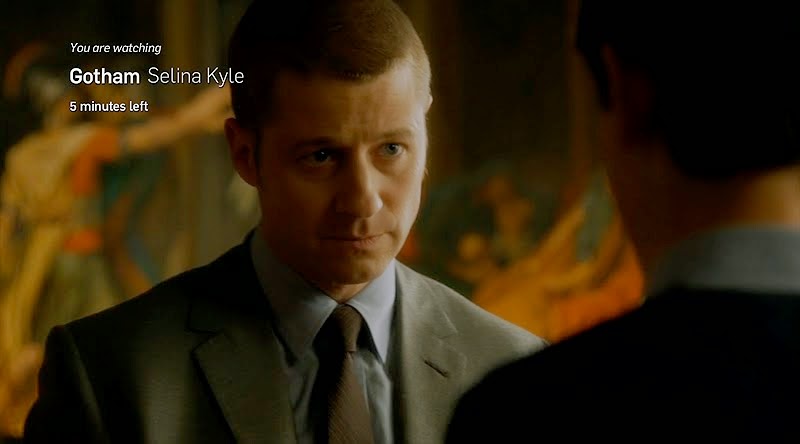
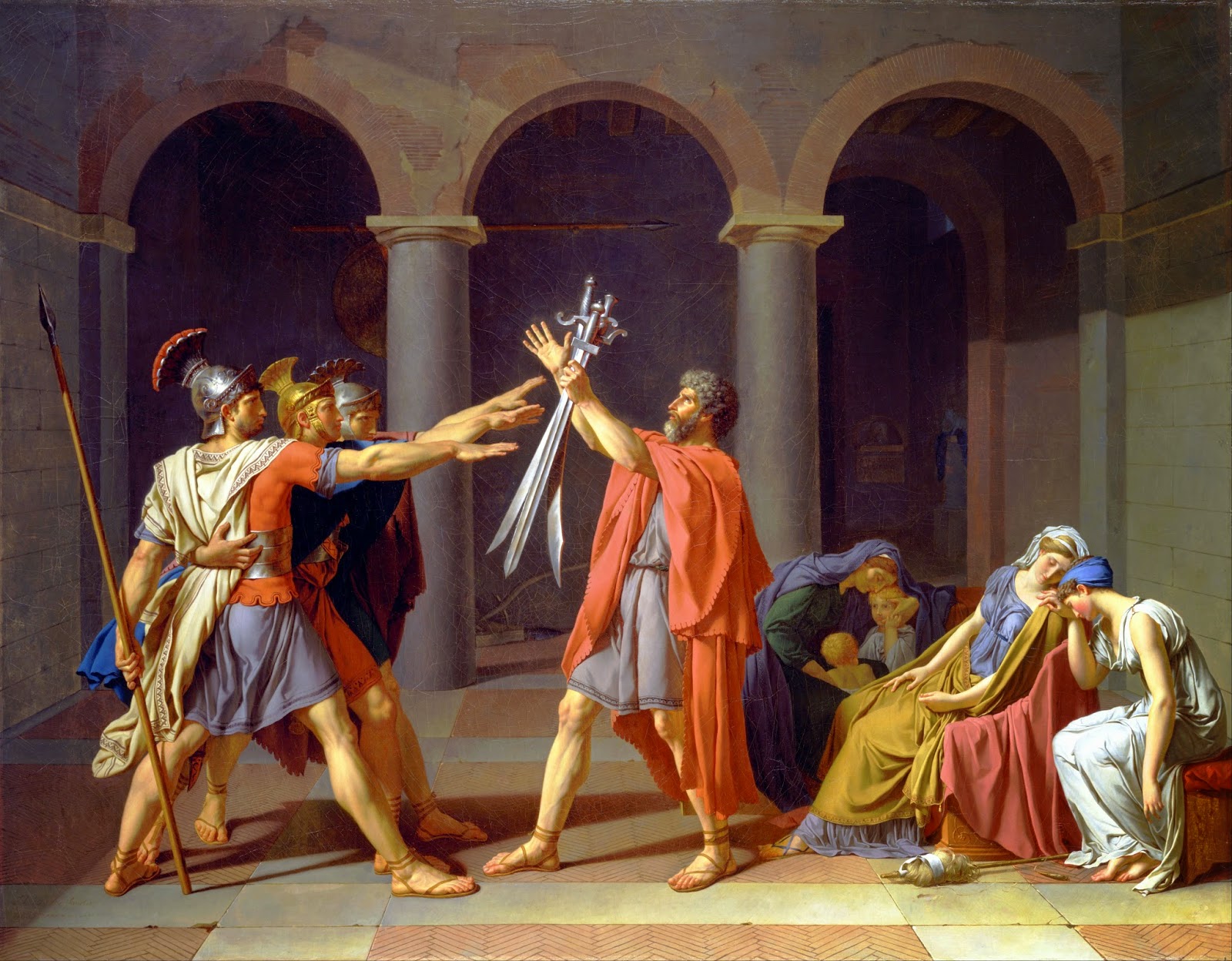
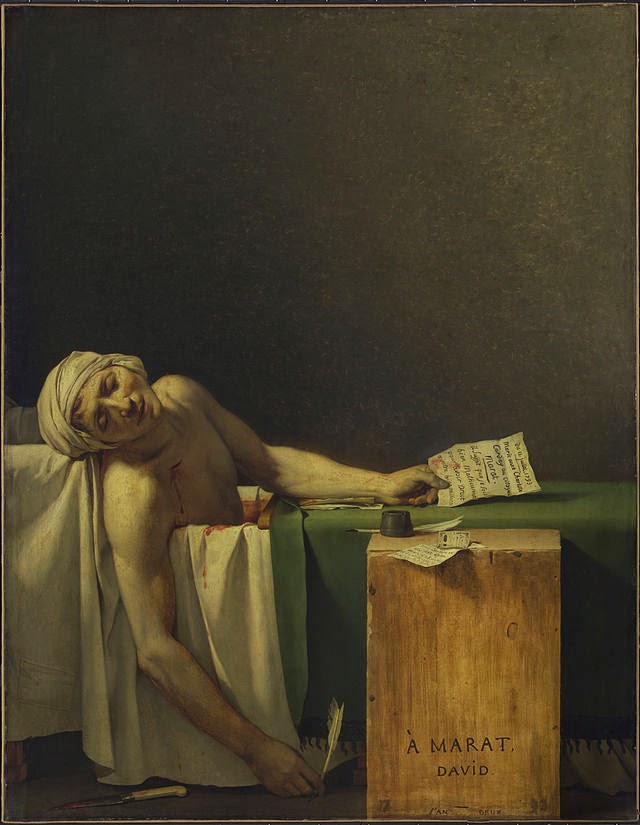

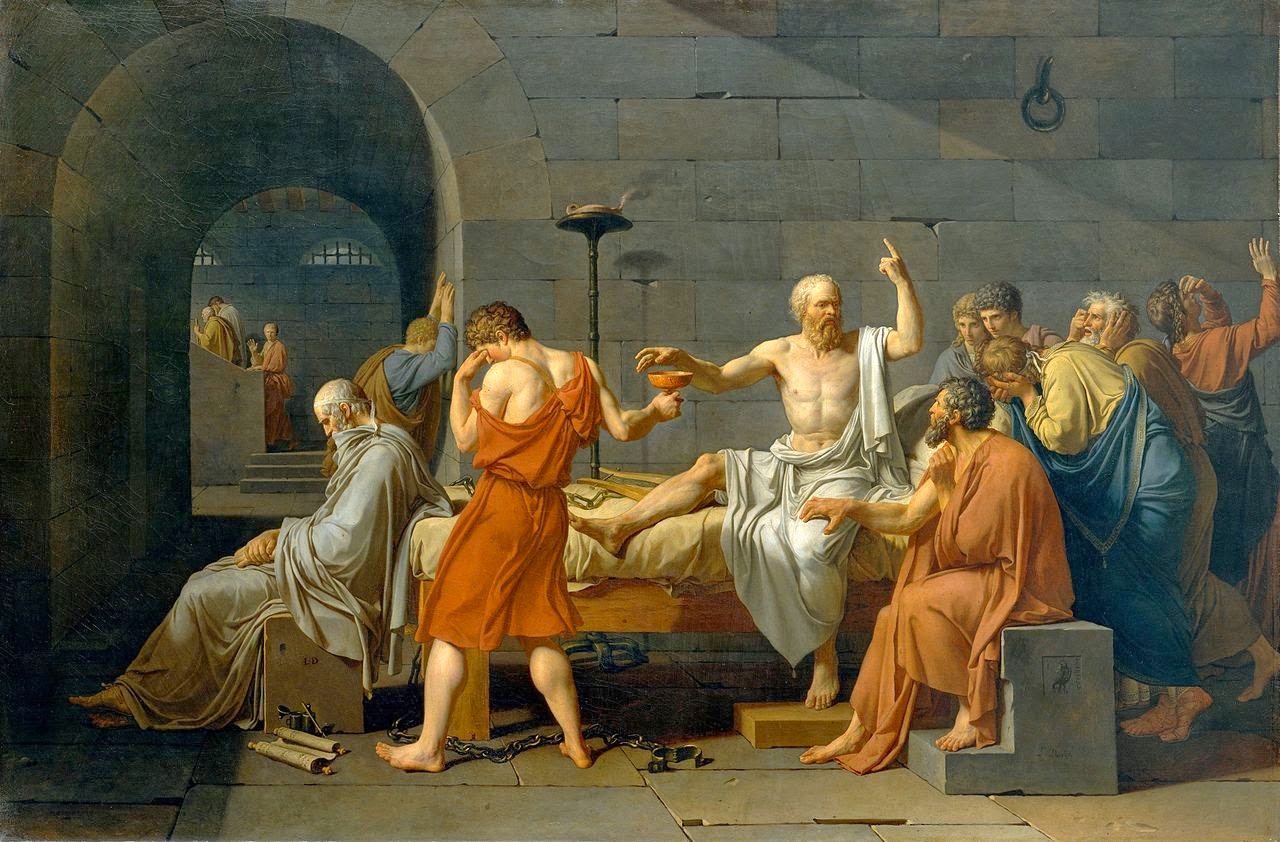
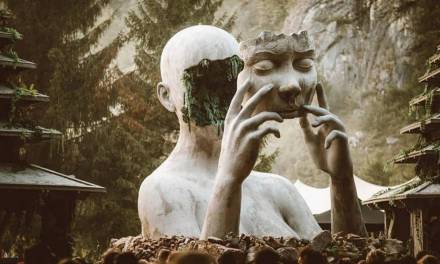
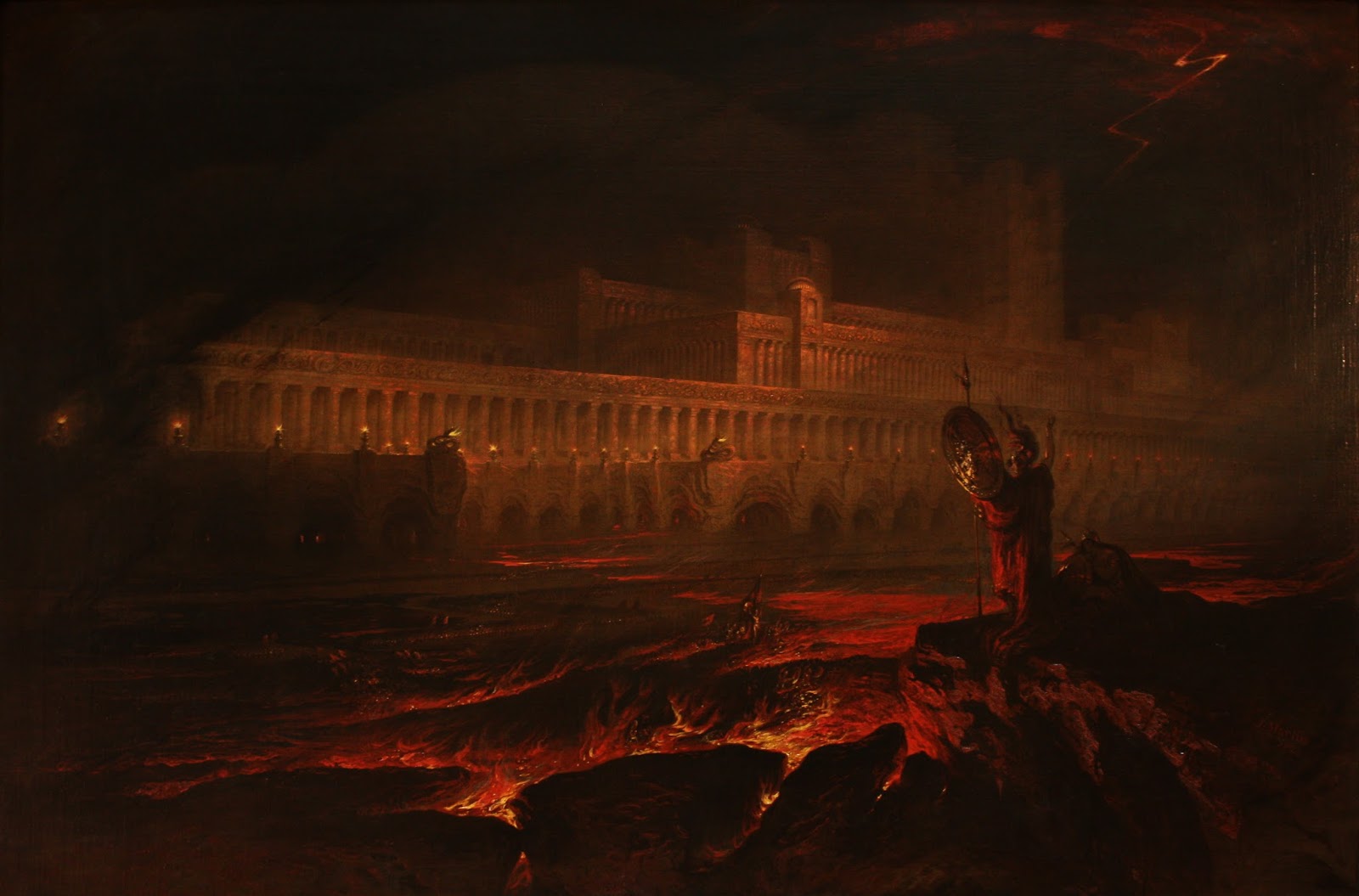
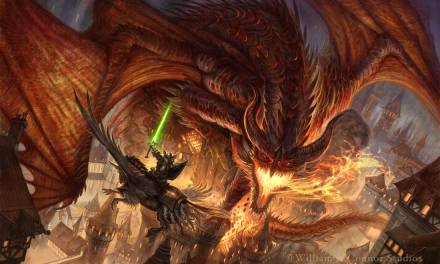
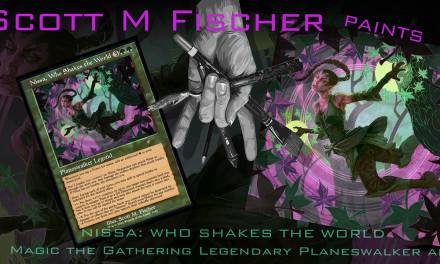

Anyone in the Princeton, NJ area should stop by the fantastic free art museum at Princeton University. It really is full of wonderful quality art work with a strong emphasis on 19th century and earlier. Hanging on those hallowed walls, credited to be from the studio of David is an unfinished version of the “Death of Socrates”. It's an incredible educational opportunity to make your own deductions (if unfamiliar with strict Davidian techniques and/or precursors to French academic technique) on the working methods of this great master. I'll leave a link to the image below. And while your there be sure to check out the Ribera…holy smokes!
http://artmuseum.princeton.edu/collections/objects/32792
As a young art student I would spend hours studying The Death of Socrates at the Met in NYC. I was yelled at many times to “Step away from the Art!” by the guards in my attempt to see the astonishing craft of his work. I think I learned everything about glazes from David, the flesh tones and complexity of color is remarkable. An in-depth study of his craft and technique is well worth the time, this blog was more about the man and work in the context of history.
As a young art student I would spend hours studying The Death of Socrates at the Met in NYC. I was yelled at many times to “Step away from the Art!” by the guards in my attempt to see the astonishing craft of his work. I think I learned everything about glazes from David, the flesh tones and complexity of color is remarkable. An in-depth study of his craft and technique is well worth the time, this blog was more about the man and work in the context of history.
And I greatly enjoyed the documentary. It's often easy, when mired down in thoughts of technique and master admiration, to forget these guys were human. With all the same fears and personal issues, including love lost and whether or not they will be able to pay their bills. With all this in mind it is astounding to read and fully realize the cultural,social, and historical impact beyond art that artists like David had. Extremely humbling.
Indeed…I've heard said that all art is a reflection of the time in which the artist lived, and David lived in amazing times.
Indeed…I've heard said that all art is a reflection of the time in which the artist lived, and David lived in amazing times.
One of my all time favorites.